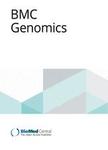版权所有:内蒙古大学图书馆 技术提供:维普资讯• 智图
内蒙古自治区呼和浩特市赛罕区大学西街235号 邮编: 010021

作者机构:Univ Padua Dept Publ Hlth Comparat Pathol & Vet Hyg Fac Vet Med I-35020 Legnaro Italy Univ Florence Dept Evolutionary Biol I-50125 Florence Italy Univ Padua Dept Biol I-35131 Padua Italy Max Planck Inst Mol Genet D-14195 Berlin Germany Univ Algarve CCMAR Faro Portugal CSIC IATS Ribera De Cabanes 12595 Castellon Spain
出 版 物:《BMC GENOMICS》 (BMC基因)
年 卷 期:2011年第12卷第1期
页 面:234-234页
核心收录:
学科分类:0710[理学-生物学] 07[理学] 09[农学] 0836[工学-生物工程]
基 金:European Union Ministry of Education and Science (Spain) [AGL2007-60049] University of Florence, Italy Portuguese Science and Technology Foundation (FCT) [SFRH/BD/30112/2006, PTDC/CVT/72083/2006] Fundação para a Ciência e a Tecnologia [SFRH/BD/30112/2006, PTDC/CVT/72083/2006] Funding Source: FCT
主 题:Gene Ontology Digestive Gland Venice Lagoon Manila Clam Basic Local Alignment Search Tool Search
摘 要:Background: The Manila clam, Ruditapes philippinarum, is one of the major aquaculture species in the world and a potential sentinel organism for monitoring the status of marine ecosystems. However, genomic resources for R. philippinarum are still extremely limited. Global analysis of gene expression profiles is increasingly used to evaluate the biological effects of various environmental stressors on aquatic animals under either artificial conditions or in the wild. Here, we report on the development of a transcriptomic platform for global gene expression profiling in the Manila clam. Results: A normalized cDNA library representing a mixture of adult tissues was sequenced using a ultra high-throughput sequencing technology (Roche 454). A database consisting of 32,606 unique transcripts was constructed, 9,747 (30%) of which could be annotated by similarity. An oligo-DNA microarray platform was designed and applied to profile gene expression of digestive gland and gills. Functional annotation of differentially expressed genes between different tissues was performed by enrichment analysis. Expression of Natural Antisense Transcripts (NAT) analysis was also performed and bi-directional transcription appears a common phenomenon in the R. philippinarum transcriptome. A preliminary study on clam samples collected in a highly polluted area of the Venice Lagoon demonstrated the applicability of genomic tools to environmental monitoring. Conclusions: The transcriptomic platform developed for the Manila clam confirmed the high level of reproducibility of current microarray technology. Next-generation sequencing provided a good representation of the clam transcriptome. Despite the known limitations in transcript annotation and sequence coverage for non model species, sufficient information was obtained to identify a large set of genes potentially involved in cellular response to environmental stress.